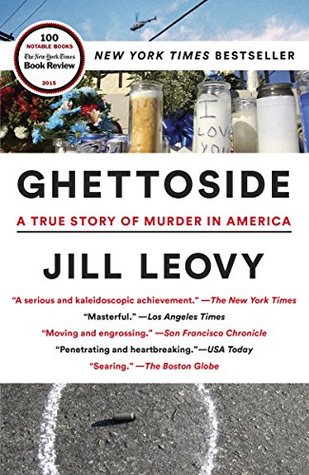More on this book
Community
Kindle Notes & Highlights
This is a book about a very simple idea: where the criminal justice system fails to respond vigorously to violent injury and death, homicide becomes endemic.
African Americans have suffered from just such a lack of effective criminal justice, and this, more than anything, is the reason for the nation’s long-standing plague of black homicides.
Since personal violence inevitably flares where the state’s monopoly is absent, this situation results in the deaths of thousands of Americans each year.
DeeDee Tennelle diagnosed in her whole family as “a touch of ADD.” It made them uniquely suited for a job that was carried out almost entirely out of doors and involved sleepless nights,
In 1993, black men in their early twenties in Los Angeles County died by homicide at a rate of 368 per 100,000 population, similar to the per capita rate of death for U.S. soldiers deployed to Iraq in the aftermath of the 2003 invasion.
war zone death rates ten minutes from peaceful suburbs.
“An infected pocket of misery, unemployment and despair
He was an exemplar of that species of smart attention-deficit cops who are drawn to ghettoside work.
“We can put them in jail for drugs a lot easier than on an assault. No one is going to give us information on an assault,”
To them, proxy justice represented a principled stand against violence. It was like a personalized imposition of martial law.
black people had remained more crowded together and isolated much longer than any other racial or ethnic group in America.
“Black segregation was permanent, across generations,” said the sociologist Douglas Massey. No one else had it as bad—not even residents of the Little Italys or Polish or Jewish immigrants to eastern cities
Death rates for black men peaked at ages eighteen to twenty-two, then remained relatively high through the forties.
He had nothing to do with it. He was simply a convenient target because he was young, black, and male.
a microcosm of how police had long functioned in the United States: preoccupied with control and prevention, obsessed with nuisance crime, and lax when it came to answering for black lives.
Tennelle’s effort at self-control was wrenching, more thunderous than any of Arielle’s histrionics.
When it was suggested to him that gang members usually do not make very good police, he laughed and agreed. “Yeah, gangs shoot everyone,” he said. “If you’re black.”
Cold cash paid out to individuals is a powerful thing: this author has watched SSI transform many aspects of life in South Central Los Angeles over about a decade, but the change for indigent black men has been especially dramatic.
Economic autonomy is like legal autonomy. It helps break apart homicidal enclaves by reducing interdependence and lowering the stakes of conflicts.


